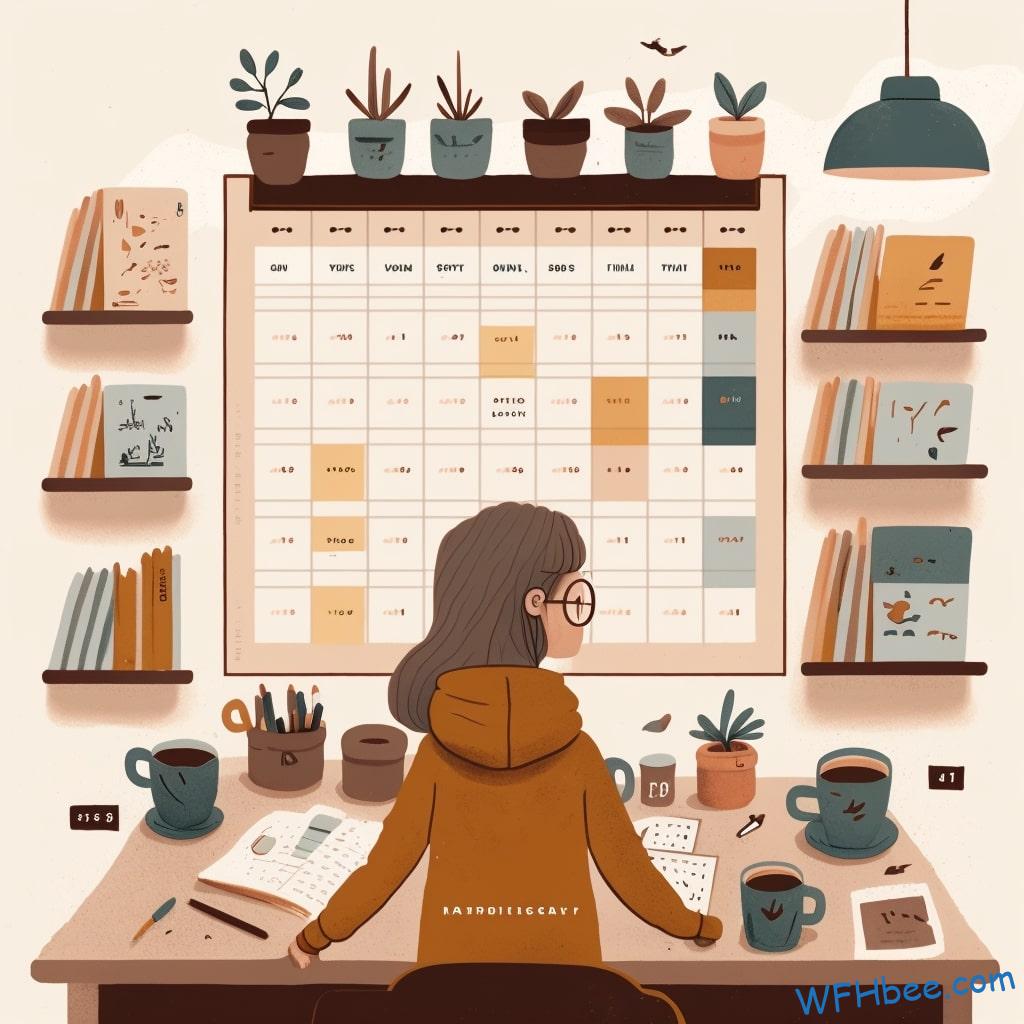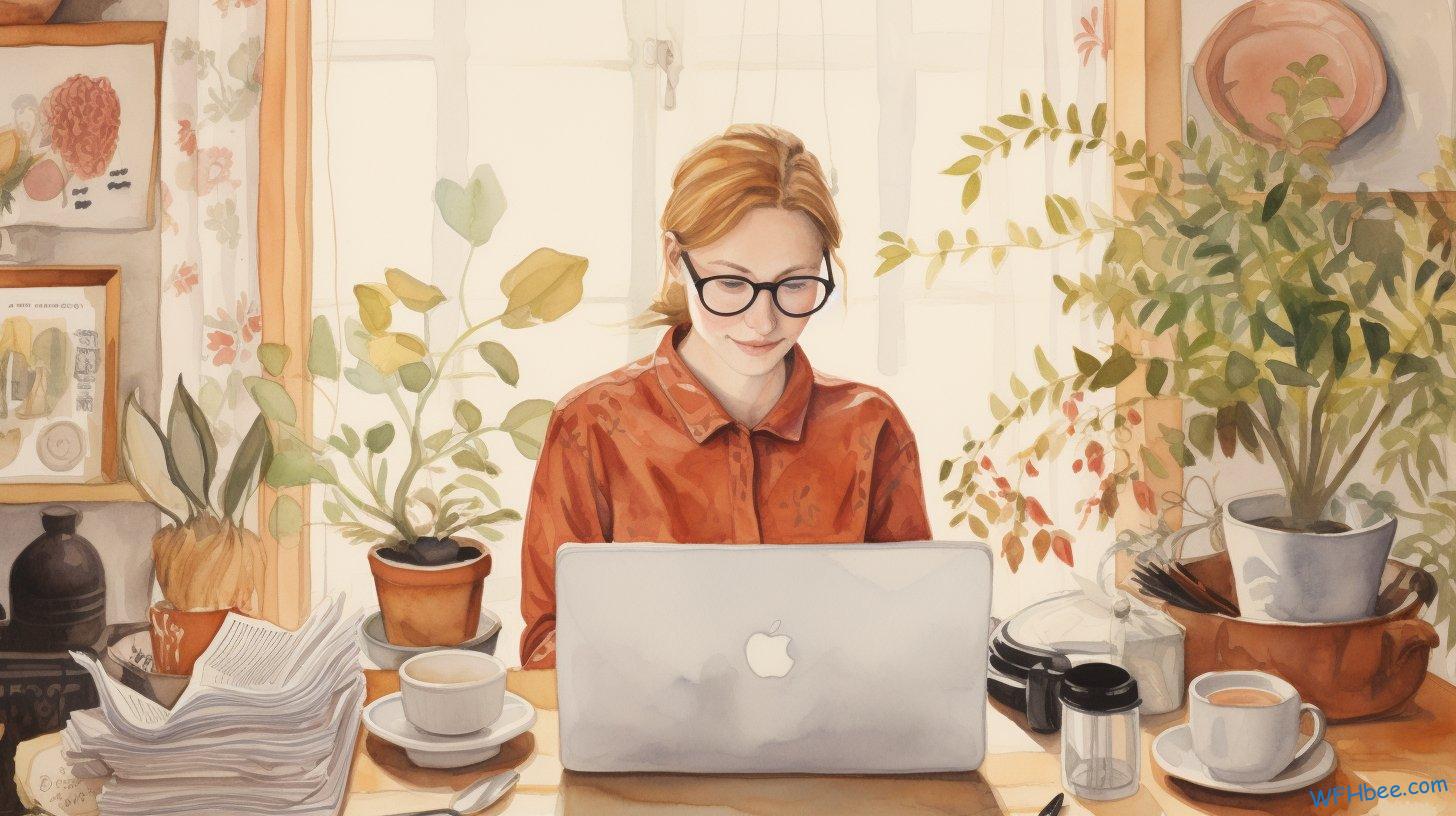Looking to break free from the confines of a traditional office? Want the freedom to design innovative architectural projects from anywhere in the world? With remote work, you can finally unleash your creativity and take control of your own schedule.
In this article, we’ll explore the benefits of remote work for architects and provide you with practical tips on how to design remotely.
Say goodbye to office walls and hello to endless possibilities! It’s time to embark on a new adventure in the world of remote architectural design.
Key Takeaways
- Remote work for architects offers benefits such as a flexible schedule, better work-life balance, and elimination of commuting time and costs.
- The use of tools and software like VR technology, cloud-based project management platforms, BIM software, and real-time communication platforms enhances remote architectural design.
- Overcoming challenges in remote architectural collaboration involves establishing reliable communication channels, building strong relationships, promoting inclusivity, using plain language, and implementing flexible work hours.
- Communication strategies for remote architectural teams include video conferencing, regular check-ins, collaborative tools, fostering trust and open communication, and encouraging active participation.

Table of Contents

The Benefits of Remote Work for Architects
You’ll love the flexibility and increased productivity that comes with remote work as an architect. The benefits and advantages of working remotely are numerous, providing you with the freedom to design and create your architectural masterpieces from anywhere in the world.
One of the greatest benefits of remote work as an architect is the ability to have a flexible schedule. No longer bound by traditional office hours, you can choose when and where to work. This freedom allows you to align your work with your personal life, resulting in a better work-life balance. You can attend family events or pursue hobbies without feeling guilty about taking time away from your career.
Another advantage is the elimination of commuting time and costs. With remote work, there’s no need to spend hours stuck in traffic or on public transportation. Instead, you can use that time for more productive activities such as brainstorming new design ideas or engaging in professional development opportunities. Additionally, remote work reduces expenses related to commuting, saving you money on fuel or public transportation fares.
Remote work also promotes increased productivity. Without distractions from colleagues or unnecessary meetings, you have more focused time to dedicate to your projects. You can create a workspace tailored specifically to your needs, allowing for optimal concentration and creativity.
Furthermore, remote work opens up a world of possibilities for collaboration. With advancements in technology and communication tools, architects can easily connect with clients and colleagues regardless of geographical location. This enables seamless collaboration on projects while maintaining flexibility in terms of travel arrangements.

Tools and Software for Remote Architectural Design
Using tools and software is essential for architects to collaborate effectively when designing from different locations. In today’s digital age, there are numerous options available that allow architects to seamlessly work together, even if they are miles apart.
Here are three key tools and software that can enhance collaborative design for remote architectural teams:
- Virtual Reality (VR) technology: With the help of VR technology, architects can create immersive virtual environments where they can explore and interact with their designs in 3D. This allows team members to visualize spaces and provide immediate feedback, regardless of their physical location.
- Cloud-based project management platforms: These platforms enable architects to store, organize, and share project files in a centralized location accessible by all team members. They also offer features such as task tracking, file versioning, and real-time collaboration tools like chat or video conferencing.
- Building Information Modeling (BIM) software: BIM software allows architects to create digital representations of buildings that contain detailed information about various elements such as structure, materials, and systems. This enables seamless collaboration among team members during the design process by providing a shared platform where everyone can contribute their expertise.
By using these tools and software solutions, remote architectural teams can overcome geographical barriers and work together efficiently towards a common goal. Collaborative design becomes easier as architects can communicate ideas visually through virtual reality experiences or exchange feedback through cloud-based platforms. The freedom to collaborate remotely empowers architects to unleash their creativity without being bound by physical boundaries.

Overcoming Challenges in Remote Architectural Collaboration
To overcome challenges in collaborating with architectural teams from different locations, embrace effective communication strategies that foster a sense of unity and shared understanding. When working remotely, you face unique challenges that can hinder collaboration. However, by implementing the right solutions, you can ensure successful teamwork despite the physical distance.
One of the main challenges is maintaining clear communication. With team members spread across different locations, it’s crucial to establish reliable channels for sharing information and ideas. Embrace technology tools like video conferencing platforms or project management software to facilitate real-time discussions and document sharing.
Another challenge is fostering a sense of unity among team members who may never physically meet. To address this, prioritize building strong relationships through regular virtual check-ins and informal conversations. Encourage open dialogue and create opportunities for everyone to contribute their thoughts and ideas.
Additionally, language barriers may arise when collaborating with international teams. Overcome this challenge by promoting inclusivity and embracing diversity within your team. Encourage the use of plain language that avoids jargon or complex technical terms to ensure clear communication for all parties involved.
Lastly, time zone differences can pose scheduling difficulties for remote collaboration. Implement flexible work hours or staggered schedules to accommodate various time zones effectively. By finding common meeting times or utilizing asynchronous communication methods like email or messaging apps, you can keep the workflow consistent despite these challenges.

Communication Strategies for Remote Architectural Teams
Maintaining clear communication is essential for effective collaboration among architectural teams working from different locations. In today’s digital age, remote communication has become an integral part of virtual team collaboration. Here are some strategies to help you navigate the challenges and ensure seamless communication with your remote architectural team:
- Utilize video conferencing: Video conferencing platforms like Zoom or Microsoft Teams allow you to have face-to-face interactions with your team members, despite being physically apart. This helps build personal connections and improves understanding.
- Establish regular check-ins: Schedule regular check-in meetings with your team to discuss progress, address any concerns, and provide updates on ongoing projects. This ensures that everyone is on the same page and allows for timely feedback.
- Use collaborative tools: Virtual collaboration tools like Trello, Asana, or Slack can greatly enhance remote communication by providing a centralized platform for sharing files, assigning tasks, and facilitating discussions. These tools promote transparency while keeping everyone organized.
In addition to these strategies, it is important to foster an environment of trust and open communication within your remote architectural team. Encourage team members to share their ideas freely and openly express their thoughts without fear of judgment. By embracing freedom in communication, you will create a collaborative atmosphere where innovative ideas can flourish.
Remember that effective remote communication requires active participation from all team members. Stay connected, ask questions when needed, and be responsive to keep the lines of communication open at all times. With these strategies in place, you can overcome the challenges of working remotely and achieve successful collaboration within your architectural team.

Maintaining Productivity and Focus in a Remote Design Environment
In a remote design environment, staying productive and focused can be challenging without the structure of a traditional office setting. But fear not! You have the freedom to create your own work routine that suits your needs and keeps you motivated.
To maintain motivation, it’s important to set clear goals for yourself. Break down larger projects into smaller tasks and give yourself deadlines. This way, you can track your progress and stay motivated as you complete each milestone.
Another key aspect of maintaining productivity is staying connected with your team members. While you may not be physically present in the same space, technology allows us to bridge this gap. Utilize video conferencing tools for regular check-ins and project updates. Collaborate on shared documents or use project management software to keep everyone on the same page.
Creating a designated workspace within your home is crucial for staying focused. Find a quiet area where distractions are minimized, like a spare room or even a corner of your bedroom if necessary. Make sure this space is well-organized and free from clutter, allowing you to concentrate on your work without any unnecessary interruptions.
Lastly, take breaks when needed. Working remotely gives you the flexibility to step away from your desk and recharge whenever necessary. Take short walks outside or engage in activities that help clear your mind. Remember, giving yourself time to rest will ultimately enhance your overall productivity.
In this remote design environment, maintaining motivation and staying connected are essential for success. Embrace the freedom that comes with working remotely while implementing these strategies to maximize productivity and focus on achieving great results in all your architectural endeavors!

Remote Architectural Design Best Practices
Embracing flexibility is crucial for architects working from home. It allows you to adapt your design process to fit your unique needs and preferences. When it comes to remote architectural design, there are several best practices that can help you collaborate effectively with your team and utilize the right tools for seamless communication.
Here are three key considerations for remote design collaboration:
- Clear Communication: Establishing clear lines of communication is essential when working remotely. Utilize video conferencing platforms, such as Zoom or Microsoft Teams, to hold virtual meetings and discussions with your team. Regularly check in with colleagues via email or instant messaging platforms like Slack to stay connected throughout the day. Effective communication ensures everyone is on the same page and promotes a sense of teamwork.
- Utilize Remote Design Tools: Take advantage of technology by exploring various remote design tools available. Cloud-based software like AutoCAD or SketchUp allows you to work collaboratively on designs in real-time, enabling seamless sharing and editing among team members. Virtual whiteboards like Miro provide a visual platform for brainstorming sessions where ideas can be shared and developed collectively.
- Establish Structured Workflows: Create a structured workflow that works best for you while allowing room for flexibility. Set specific goals and deadlines, breaking down larger tasks into manageable chunks. Use project management tools like Trello or Asana to track progress, assign tasks, and ensure accountability within the team.

Balancing Work-Life Integration as a Remote Architect
Now that you’ve learned about the best practices for remote architectural design, it’s important to address the challenge of balancing work and life as a remote architect. Finding that perfect work-life integration can be tricky, but with some mindful strategies, you can create a fulfilling and balanced lifestyle.
One of the biggest challenges of remote work is maintaining boundaries between your personal and professional life. Without a physical office to leave behind at the end of the day, it’s easy for work to spill over into your personal time. To overcome this challenge, establish a designated workspace in your home where you can focus solely on your architecture projects. When you step away from this space, make a conscious effort to disconnect from work-related tasks and give yourself permission to relax and recharge.
Another key aspect of achieving work-life balance as a remote architect is managing your time effectively. It’s crucial to set clear goals and priorities each day so that you don’t get overwhelmed with an endless list of tasks. Create a schedule that allows for breaks and leisure activities throughout the day. This will help prevent burnout and ensure that you have enough energy for both your work commitments and personal interests.
Additionally, communication becomes vital when working remotely. Make sure to maintain regular contact with clients, colleagues, or team members through virtual meetings or messaging platforms. Being transparent about your availability and setting realistic expectations will help manage everyone’s expectations.

Building and Nurturing Client Relationships in Remote Architectural Work
To build and nurture client relationships in your remote architectural projects, it’s important to prioritize clear and consistent communication. As an architect working remotely, you have the freedom to work from anywhere in the world, but with this freedom comes the challenge of maintaining strong client satisfaction and effective remote team dynamics. Here are some strategies to help you navigate these challenges:
- Regular virtual meetings: Schedule regular video calls with your clients to discuss project updates, address any concerns or questions they may have, and keep them involved in the design process. This will not only ensure that everyone is on the same page but also foster a sense of trust and transparency.
- Use collaboration tools: Take advantage of online collaboration tools that allow you to share design files, make real-time edits, and gather feedback from clients. By utilizing these tools effectively, you can streamline communication and eliminate any potential miscommunications or delays.
- Maintain a proactive approach: Be proactive in your communication by regularly updating clients on project progress, milestones achieved, and upcoming deadlines. This will demonstrate your commitment to their project’s success while also keeping them engaged throughout the entire process.
By focusing on clear communication, using collaborative tools effectively, and maintaining a proactive approach towards client engagement, you can ensure client satisfaction even when working remotely.
Remember that building strong relationships requires effort on both ends – be responsive to their needs while setting realistic expectations for remote team dynamics. With these strategies in place, you can create successful architectural projects while enjoying the freedom that comes with remote work.

Remote Architectural Project Management Tips and Techniques
When managing your architectural projects from a distance, it’s crucial to establish clear project goals and expectations right from the start. As an architect working remotely, you understand the challenges that come with designing and coordinating projects from afar. However, with the right tips and techniques, you can overcome these obstacles and successfully manage your remote architectural projects.
One of the main challenges in remote architectural design is ensuring effective communication between team members. To address this challenge, utilize technology tools that allow for easy collaboration and real-time communication. Platforms like Slack or Microsoft Teams can facilitate seamless communication among team members, even when they are physically apart.
Another important aspect of remote project management is establishing a structured workflow. Clearly define roles and responsibilities for each team member involved in the project. This not only ensures accountability but also promotes efficiency and avoids confusion.
Additionally, regular check-ins with your team are essential for successful remote project coordination. Schedule video conferences or virtual meetings to discuss progress updates, address any concerns or questions, and provide guidance when needed.
Lastly, embrace flexibility in your approach to remote architectural project management. Recognize that different team members may have varying work schedules or time zones due to their freedom of choice in how they structure their work-life balance. By being open-minded to flexible working arrangements, you promote a culture of trust and autonomy within your team.
Overall, by addressing remote architectural design challenges through effective communication tools, establishing a structured workflow, conducting regular check-ins with your team, and embracing flexibility in project management approaches; you can successfully manage your architectural projects from a distance while still enjoying the freedom that comes with working remotely.

The Future of Remote Work in the Architecture Industry
As an architect in the industry, you may be curious about what lies ahead for remote project management in the architecture field. The future of remote work in the architecture industry is promising, offering new possibilities and opportunities for architects to express their creativity and collaborate with clients from anywhere in the world. Here’s what you can expect:
- Freedom to work from anywhere: With remote work becoming more prevalent, architects are no longer tied to a specific location. You can work from your home office, a co-working space, or even while traveling. This freedom allows for a better work-life balance and the ability to explore new environments that can inspire your designs.
- Enhanced collaboration through technology: Technology plays a crucial role in shaping remote architectural work. Virtual reality (VR) and augmented reality (AR) tools allow architects to create immersive experiences for clients, enabling them to visualize and interact with designs remotely. Collaboration platforms like BIM 360 facilitate real-time communication between team members, making it easier than ever to coordinate projects across different locations.
- Increased focus on architectural creativity: Remote work has had a significant impact on architectural creativity. Without the constraints of traditional office settings, architects have more flexibility to experiment with innovative design solutions. Remote work also encourages self-motivation and independent thinking, fostering a sense of freedom that can lead to groundbreaking ideas.

Frequently Asked Questions
How Can Remote Work Benefit Architects in Terms of Work-Life Balance?
You can benefit from remote work as an architect by enjoying flexible schedules and reducing commuting time. This allows you to have better work-life balance, giving you the freedom and independence you desire.
What Are Some Key Tools and Software That Architects Can Utilize for Remote Design Work?
You can design remotely with the help of collaborative design tools and virtual reality software. These powerful tools give you the freedom to create, collaborate, and visualize your designs from anywhere in the world.
What Are Some Strategies for Effective Communication Within Remote Architectural Teams?
To effectively collaborate with your remote architectural team, overcome remote communication challenges by utilizing various tools and platforms. Foster open and frequent communication to ensure effective remote design collaboration and maintain a sense of freedom in your work.
How Can Architects Overcome Challenges Related to Collaboration in a Remote Setting?
To overcome challenges in remote collaboration, architects can embrace the freedom of working from anywhere. Use remote design tools to connect and communicate effectively with team members, ensuring a seamless flow of ideas and efficient project completion.
What Are Some Best Practices for Maintaining Productivity and Focus While Working Remotely as a Designer?
To maintain productivity and focus while working remotely as a designer, it’s important to stay motivated and organized. Set clear goals, create a schedule, and find ways to stay inspired. Embrace the freedom of remote work!

Conclusion
In conclusion, remote work offers architects a wealth of benefits, from increased flexibility to improved work-life balance. By utilizing the right tools and software, overcoming communication challenges, and maintaining productivity and focus, architects can successfully design remotely.
Remember the adage, ‘Distance makes the heart grow fonder.’ Despite physical separation, building and nurturing client relationships is still possible in a remote setting. With effective project management techniques and a forward-thinking approach, the future of remote work in the architecture industry looks bright.
Embrace this opportunity for growth and innovation!







